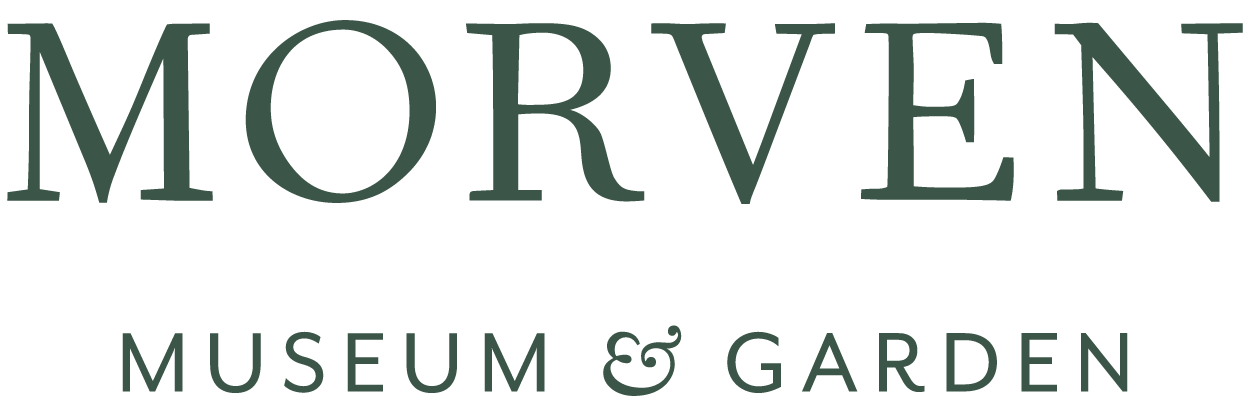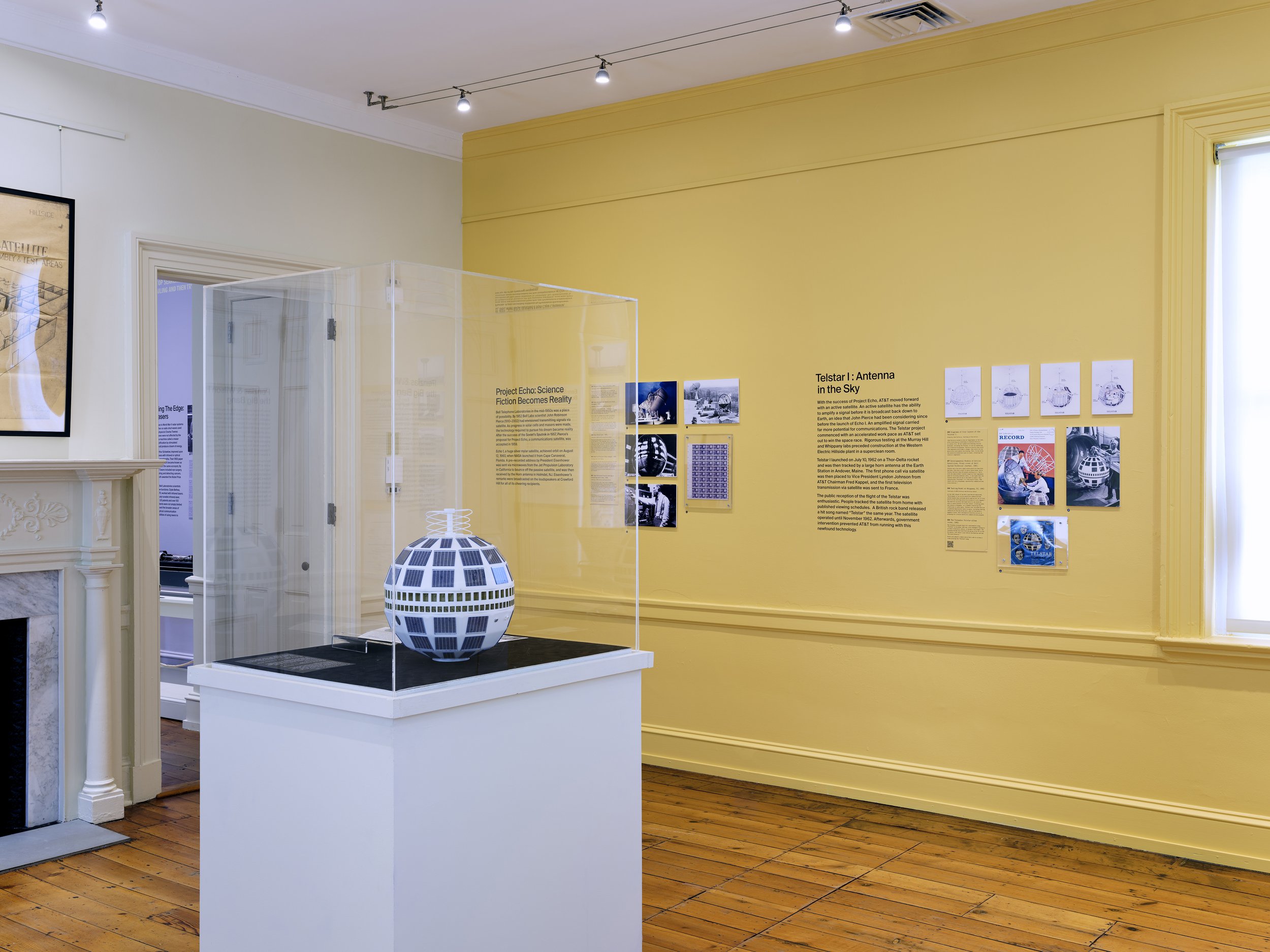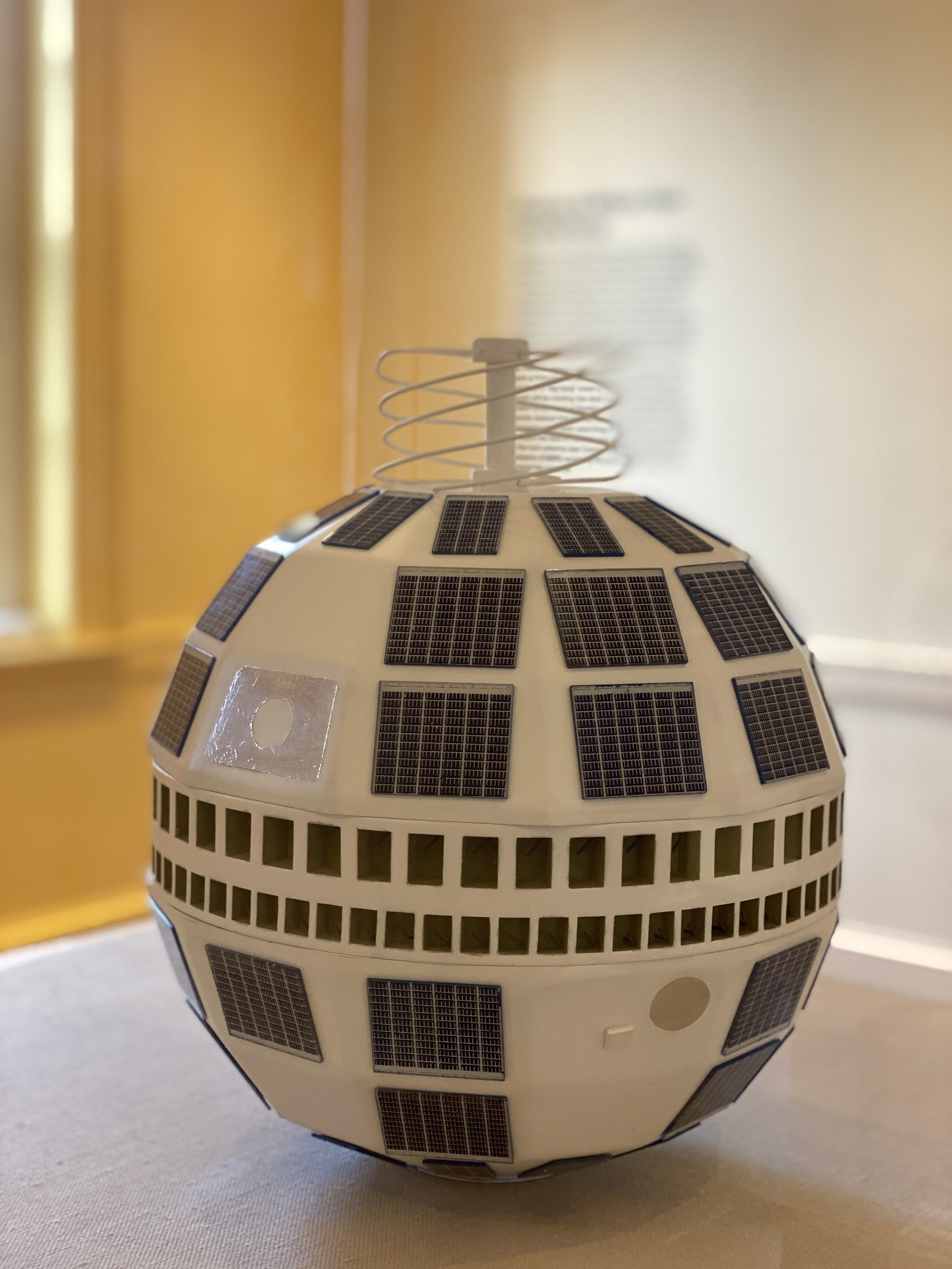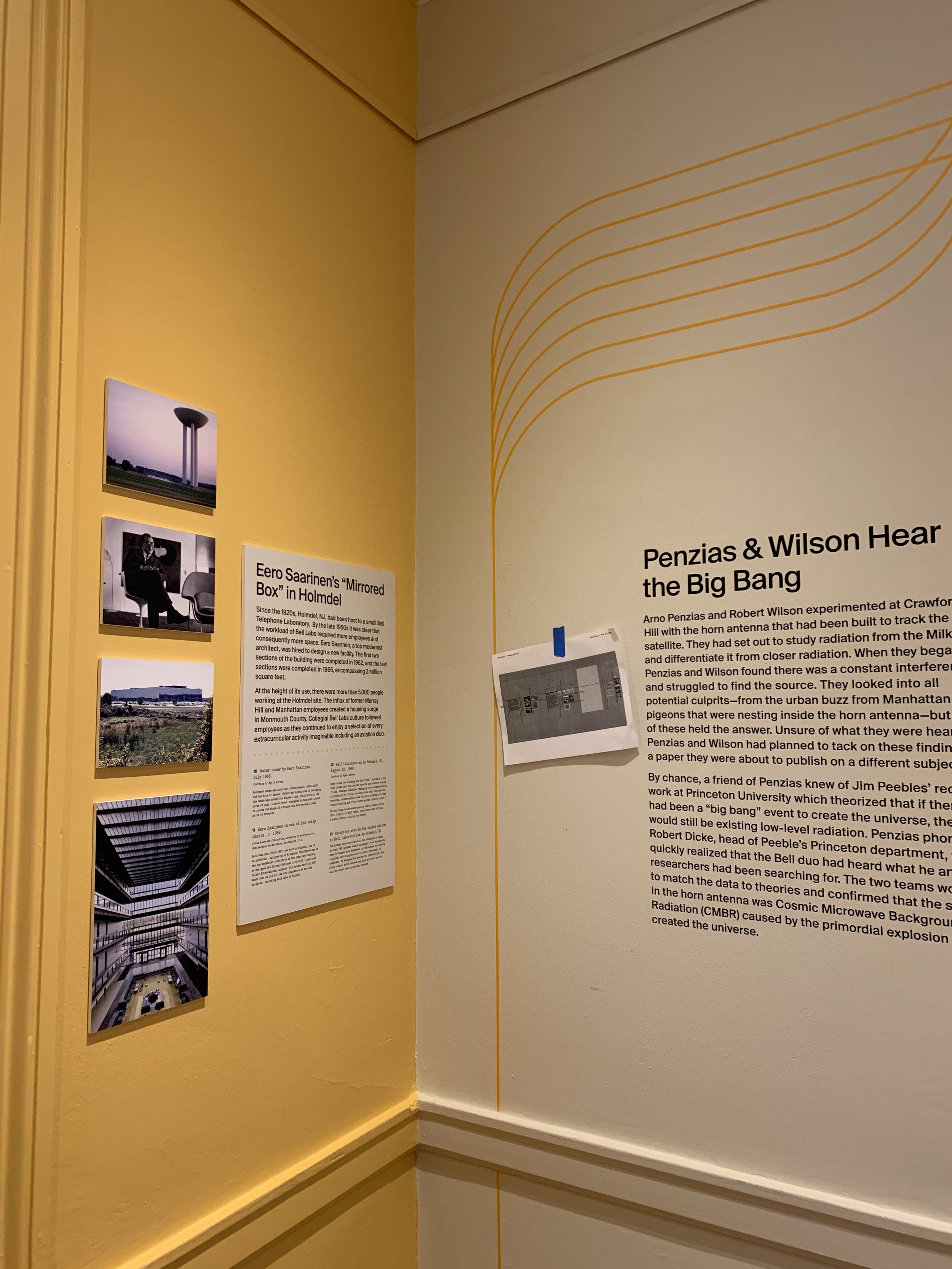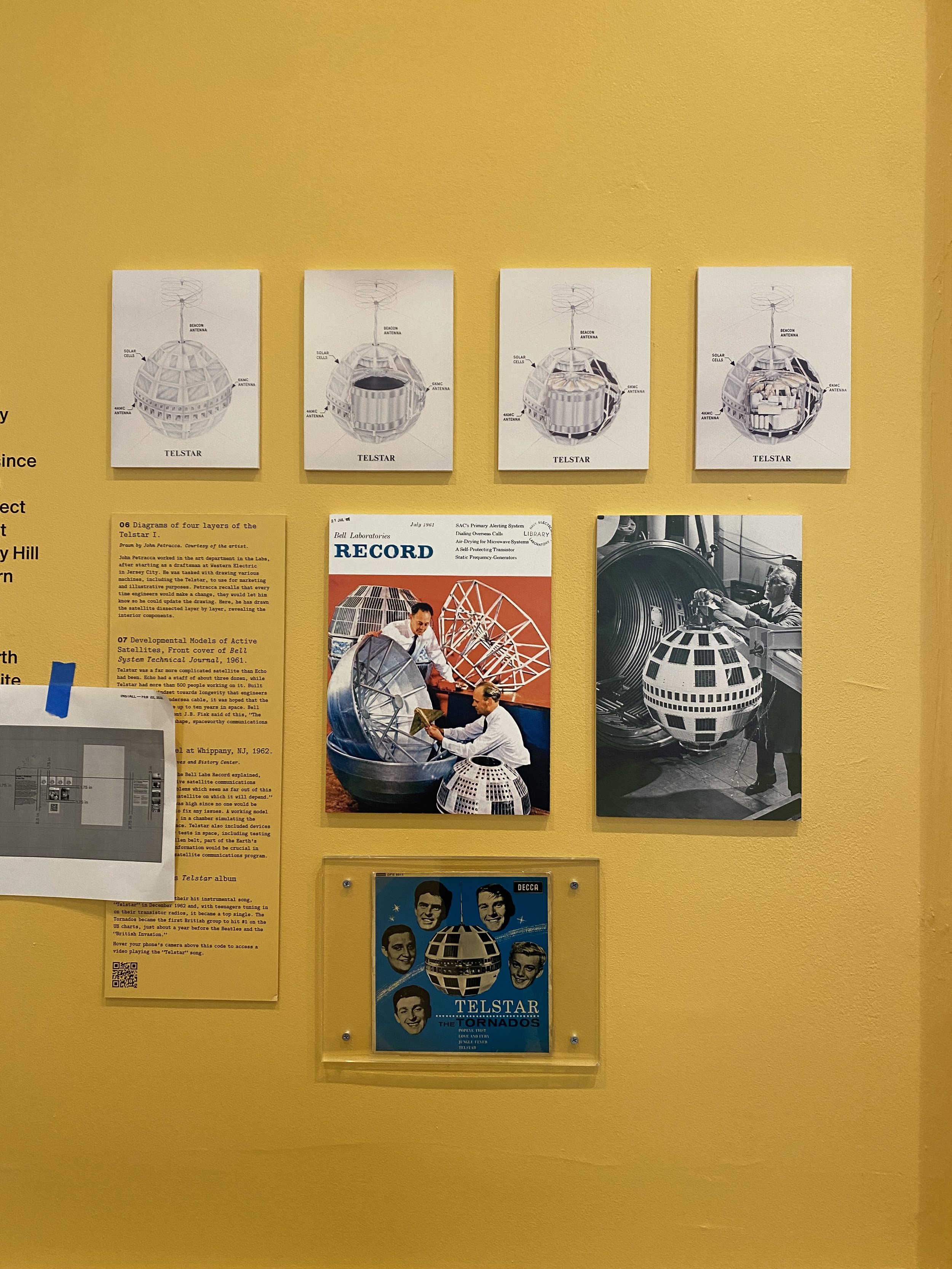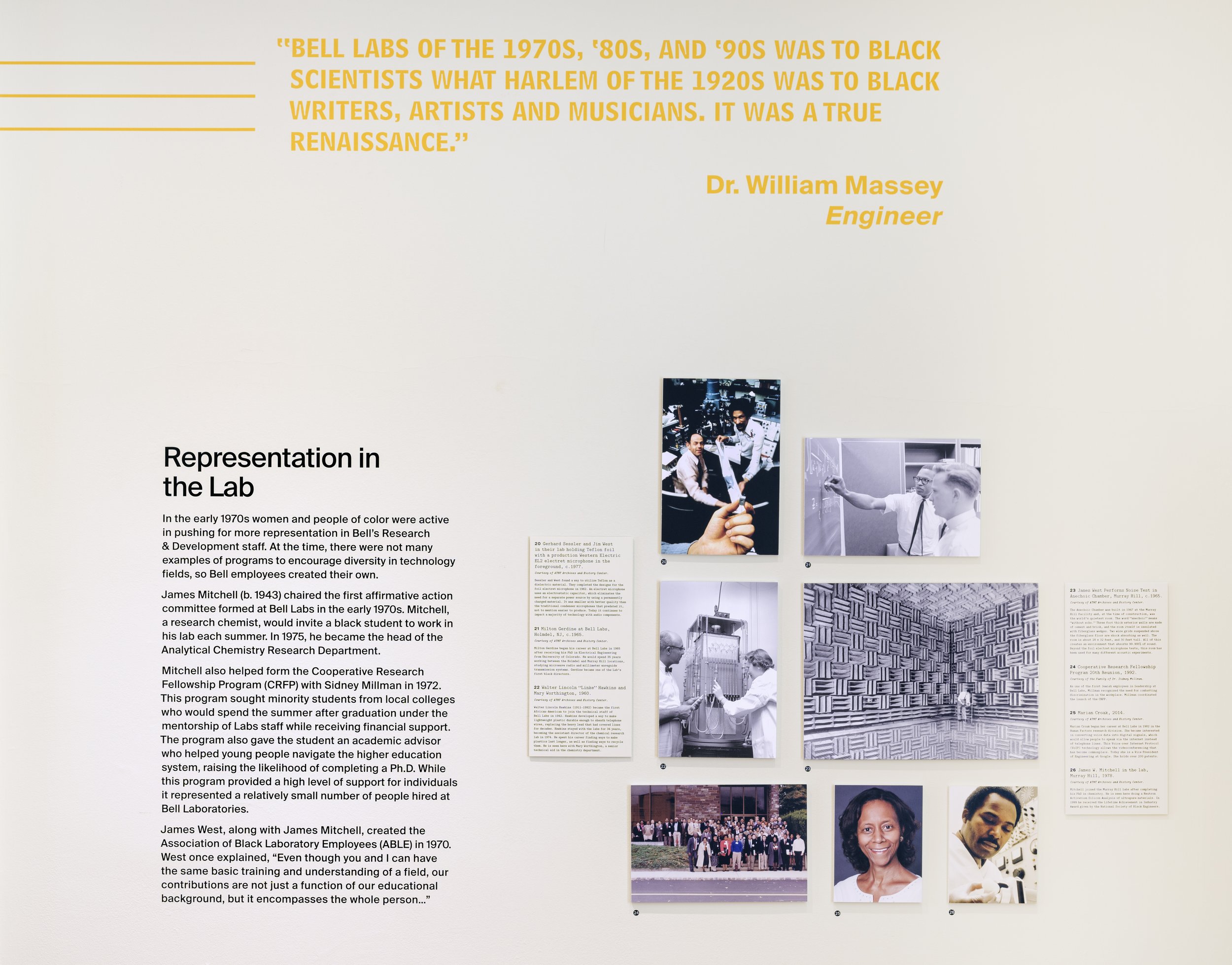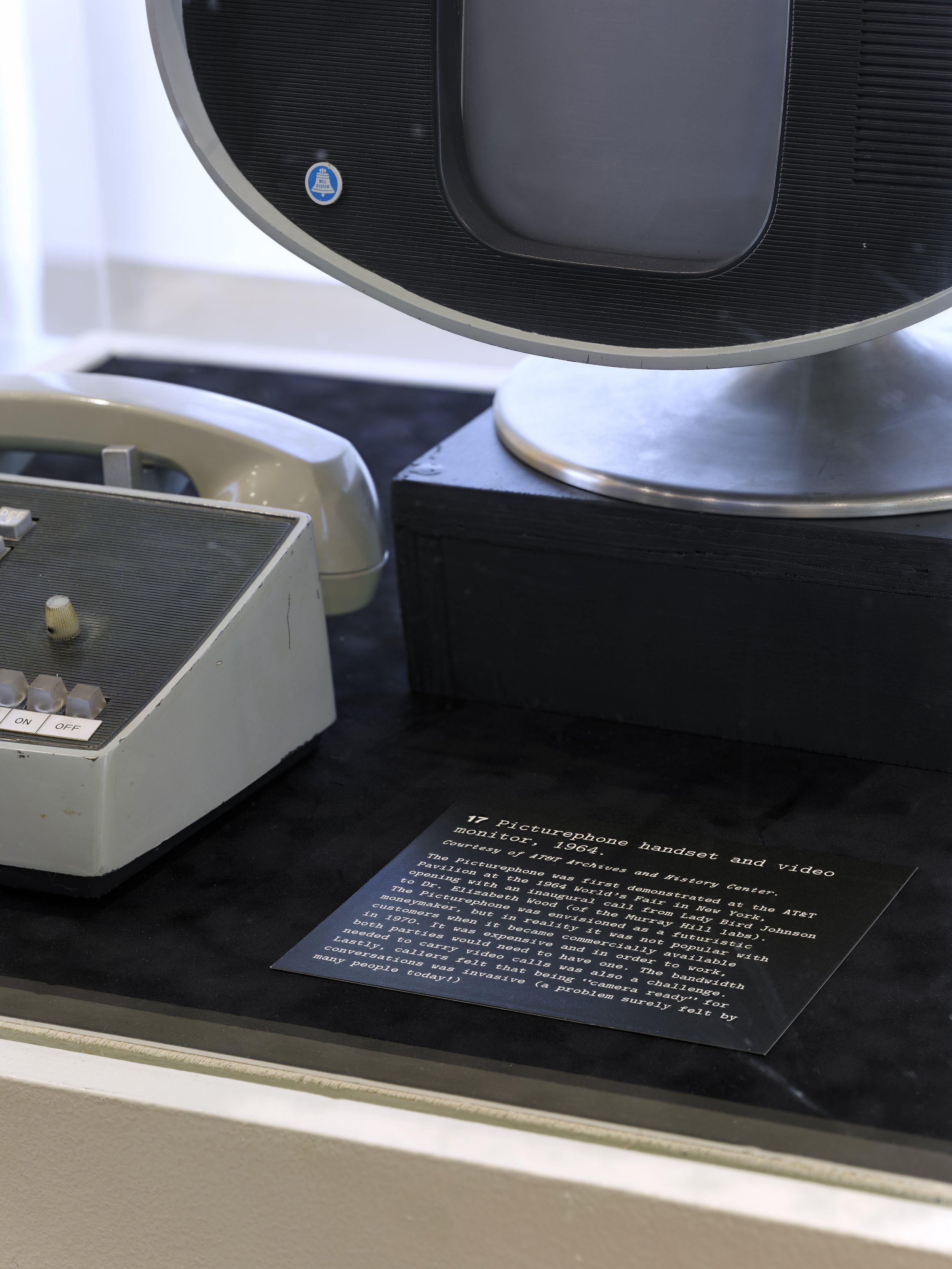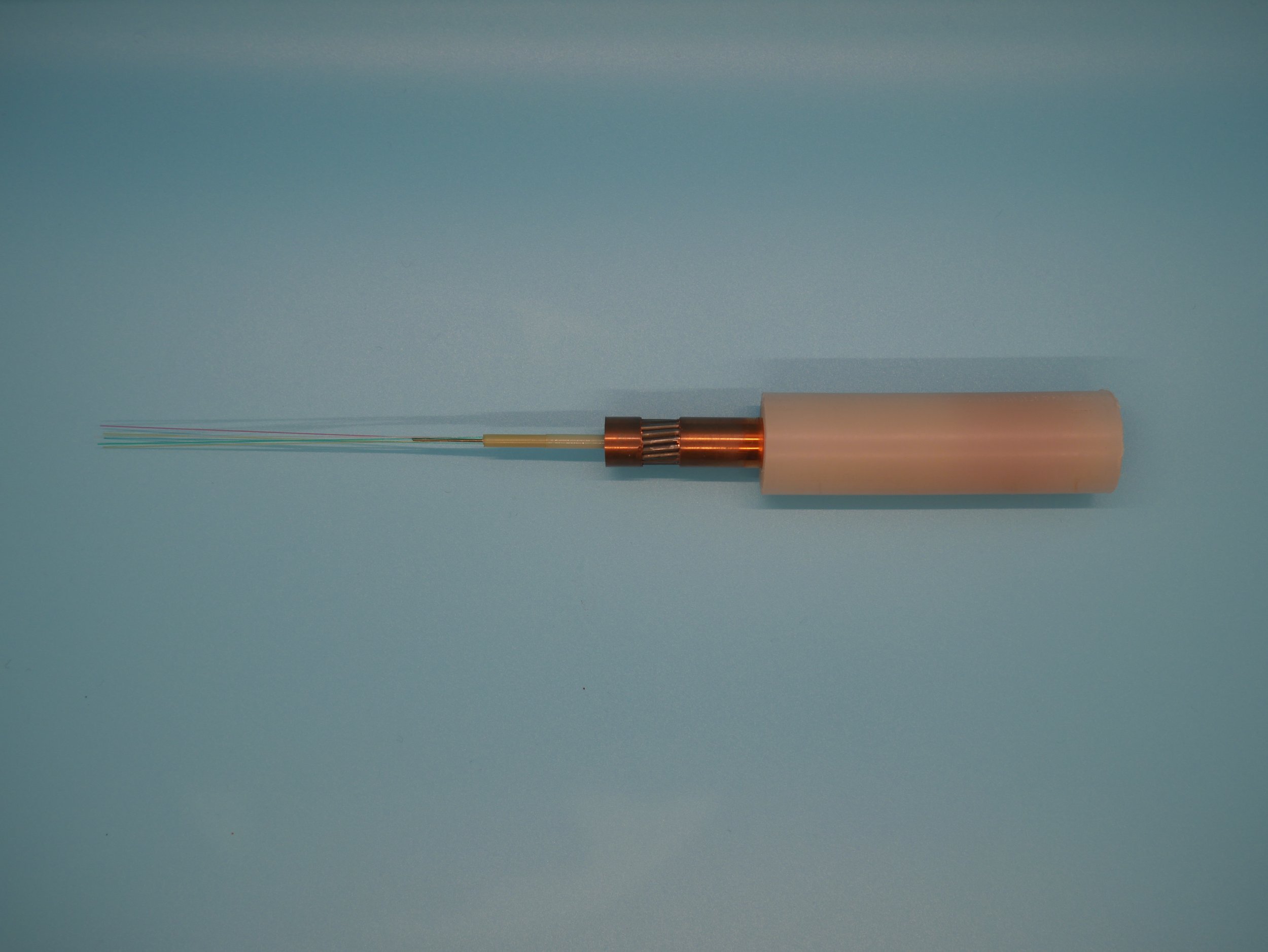Gallery 5
Click here to head back to the Ma Bell landing page.
Project Echo: Science Fiction Becomes Reality
Horn Antenna and Satellite Dish, Holmdel, 1960.
Collection of AT&T Archives and History Center.
Bell Telephone Laboratories in the mid-1950s was a place of possibility. By 1952 Bell Labs scientist John Robinson Pierce (1910–2002) had envisioned transmitting signals via satellite. As progress in solar cells and masers were made, the technology required to pursue his dream became reality. After the success of the Soviet’s Sputnik in 1957 Pierce’s proposal for Project Echo, a communications satellite, was accepted in 1959.
Echo 1, a huge silver mylar satellite, achieved orbit on August 12, 1960, when NASA launched it from Cape Canaveral, Florida. A pre-recorded address by President Eisenhower was sent via microwaves from the Jet Propulsion Laboratory in California to bounce off the passive satellite, and was then received by the Horn antenna in Holmdel, NJ. Eisenhower’s remarks were broadcasted on the loudspeakers at Crawford Hill for all of its cheering recipients.
Click here to learn more about Project Echo.
Telstar I: Antenna in the Sky
With the success of Project Echo, AT&T moved forward with an active satellite. An active satellite has the ability to amplify a signal before it is broadcast back down to Earth, an idea that John Pierce had been considering since before the launch of Echo I. An amplified signal carried far more potential for communications. The Telstar project commenced with an accelerated work pace as AT&T set out to win the space race. Rigorous testing at the Murray Hill and Whippany labs preceded construction at the Western Electric Hillside plant in a superclean room.
Telstar I launched on July 10, 1962 on a Thor-Delta rocket and was then tracked by a large horn antenna at the Earth Station in Andover, Maine. The first phone call via satellite was then placed to Vice President Lyndon Johnson from AT&T Chairman Fred Kappel, and the first television transmission via satellite was sent to France.
The public reception of the flight of the Telstar was enthusiastic. People tracked the satellite from home with published viewing schedules. A British rock band released a hit song named “Telstar” the same year. The satellite operated until November 1962. Afterwards, government intervention prevented AT&T from running with this newfound technology.
Click here to learn about Telstar I.
Eero Saarinen's "Mirrored Box" in Holmdel
Eero Saarinen in one of his tulip chairs, c. 1958.
Aline Saarinen Collection, Archives of American Art, Smithsonian Institution, Washington, D.C.
Since the 1920s, Holmdel, NJ had been host to a small Bell Telephone Laboratory. By the late 1950s it was clear that the workload of Bell Labs required more space for more employees. Eero Saarinen, a top modernist architect, was hired to design a new facility. The first two sections of the building were completed in 1962, and the last sections were completed in 1966, encompassing 2 million square feet.
At the height of its use, there were more than 5,000 people working at the Holmdel site. The influx of former Murray Hill and Manhattan employees created a housing surge in Monmouth County. Collegial Bell Labs culture followed and employees continued to enjoy a selection of every extracurricular activity imaginable including an aviation club.
Click here to learn more about the “Mirrored Box”.
Penzias & Wilson Hear the Big Bang
Penzias and Wilson on the Horn Antenna, c. 1962.
Image Courtesy of NASA.
Arno Penzias and Robert Wilson experimented at Crawford Hill with the horn antenna that had been built to track the Echo satellite. They had set out to study radiation from the Milky Way and differentiate it from closer radiation. When they began, Penzias and Wilson found there was a constant interference and struggled to find the source. They looked into all potential culprits — from the urban buzz from Manhattan to pigeons that were nesting inside the horn antenna — but none of these held the answer. Unsure of what they were hearing, Penzias and Wilson had planned to tack on these findings to a paper they were about to publish on a different subject.
By chance, a friend of Penzias knew of Jim Peebles’ recent work at Princeton University which theorized that if there had been a “big bang” event to create the universe, there would still be existing low-level radiation. Penzias phoned Robert Dicke, head of Peeble’s Princeton department, who quickly realized that the Bell duo had heard what he and his researchers had been searching for. The two teams worked to match the data to theories and confirmed that the sound in the horn antenna was Cosmic Microwave Background Radiation (CMBR) caused by the primordial explosion that created the universe.
Click here to learn more about Penzias & Wilson’s experiments.
Fiber Optics
Inner Section of SL Fiber Optic Undersea Cable.
Collection of AT&T Archives and History Center.
As laser development took place in the 1960s, engineers recognized possibilities to use them to send information. In the 1970s, Bell Labs formed a partnership with noted glass maker, Corning, to create “optical fibers” or hair-thin glass wires as a conduit for laser beams. To prevent loss in signal strength, the glass needed to be flawless. Bell Laboratory researchers John MacChesney and Paul O’Connor transformed the delicate strands into an affordable and practical medium of information transmission.
Click here to learn more about Fiber Optics.
Representation in the Lab
Cooperative Research Fellowship Program 20th Reunion, 1992.
Image Courtesy of the Family of Dr. Sidney Millman.
In the early 1970s women and people of color were active in pushing for more representation in Bell’s Research & Development staff. At the time, there were not many examples of programs to encourage diversity in technology fields, so Bell employees created their own.
James Mitchell (b. 1943) chaired the first affirmative action committee formed at Bell Labs in the early 1970s. Mitchell, a research chemist, would invite a black student to work in his lab each summer. In 1975, he became the head of the Analytical Chemistry Research Department.
Mitchell also helped form the Cooperative Research Fellowship Program (CRFP) with Sidney Millman in 1972. This program sought minority students from local colleges who would spend the summer after graduation under the mentorship of Labs staff while receiving financial support. The program also gave the student an academic advisor who helped young people navigate the higher education system, raising the likelihood of completing a Ph.D. While this program provided a high level of support for individuals, it was still a relatively small number of people moving through the program.
James West, along with James Mitchell, created the Association of Black Laboratory Employees (ABLE) in 1970. West once explained, "Even though you and I can have the same basic training and understanding of a field, our contributions are not just a function of our educational background, but it encompasses the whole person…"
Click here to learn more about Representation in the Lab.
To learn more about the impact of these programs, click here to see Black Scientific Renaissance at Bell Labs, a panel program hosted at Morven.
Ring's Ma Bell: the Cell Network
Metroliner Mobile Phone Service, 1969.
Collection of AT&T Archives and History Center.
In the 1940s AT&T sought permission from the Federal Communications Commission (FCC) to use untouched Ultra-High Frequency (UHF) range for mobile telephone service in automobiles. In the application to the FCC, Bell engineer Doug Ring outlined technical plans for the service. AT&T’s application was rejected and the frequencies were allocated to television broadcasting. Ring’s work was all but forgotten.
In 1966, the Holmdel Labs were abuzz with the idea that the FCC might open up extra frequencies for mobile phone use. Engineers Dick Frenkiel and Phil Porter began their work with Ring’s 1947 plans in hand. Engineers needed infrastructure to carry the calls — for cell service this meant antennas. Already in place was the No. 1 ESS station providing the flexible programming which allowed mobile calls to be automatically handed off between antenna stations.
Ultimately, with accusations of monopoly, AT&T was successful in providing cellular service but agreed to refrain from manufacturing cell phones.
Click here to learn more about the Cell Network.
Entering the Digital Age
Laurie Spiegel playing Alles Synthesizer
The telephone was an early example of human expression being transferred by electrical waves, but Bell Labs staff took machine-to-human communication to another level. In the 1930s, The Voder and Vocoder, created for communications, would electronically generate and modify sounds. They gave way to the Bell Labs Digital Synthesizer in the 1970s, which could be used to reproduce musical tones. John Pierce released Music from Mathematics in 1961 and musicians, like Laurie Spiegel, came to Bell Laboratories to experiment. She was one of the first to use a computer to compose a song.
As computers processed data, graphics allowed engineers to see the output. A. Michael Noll pioneered this work at Murray Hill. In 1965, he and Béla Julesz participated in the Howard Wise Gallery’s Computer Generated Pictures, the first exhibit of computer art in the U.S. Leon Harmon and Kenneth Knowlton learned how to digitize an existing image, creating a stir with their first major work: The Nude.
With Bell’s huge operations becoming increasingly computerized, solutions in software were needed. In 1969, Kenneth Thompson and Dennis Ritchie created the successful UNIX operating system. By 1982 all Bell Labs computers were running on UNIX. AT&T licensed it to universities, the US government, and other commercial firms.
Click here to learn more about the Digital Age and Bell.
End of the Bell System
After the divestiture, 2015.
Image Courtesy of Wall Street Journal.
The 1970s and 80s brought renewed scrutiny from the US Government’s antitrust division. A 1982 agreement declared the divestiture of AT&T’s various phone branches creating seven regional operating companies, which became known as Baby Bells. AT&T was allowed to continue operating long distance service and was also permitted to pursue other industries. January 1, 1984 marked the official breakup of the Bell System.
Employees mourned the divestiture. Thousands lost jobs with the closing of the Kearny Western Electric plant. As a scaled-back company, AT&T now lacked the funds from its local phone service. Many felt that the divestiture signaled the end of an era in which unfettered research was enthusiastically encouraged.
The legacy of the Bell System, especially contributions coming from New Jersey, continues to live on with technology used every day around the globe.
Click here to learn more about the End of the Bell System.
To learn more about Ma Bell, click here to see a selection of telephones displayed in Morven’s permanent exhibition, or click here to read Ma Bell Memories left by visitors to the exhibition.
